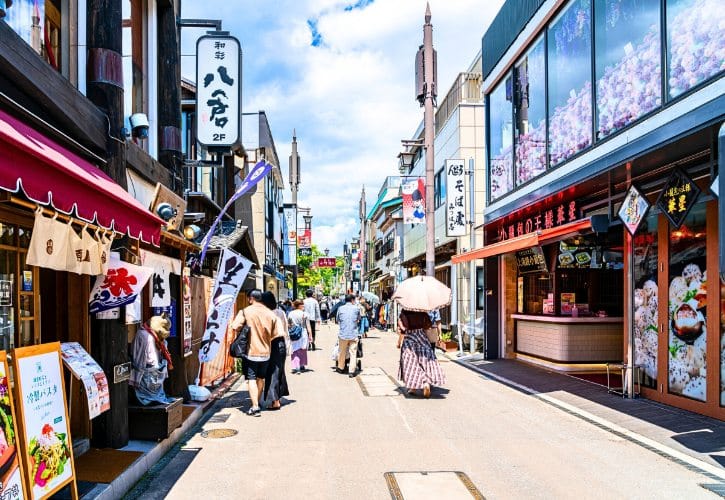
Just outside Tokyo, two charming towns offer a slower rhythm and timeless beauty.
In Kamakura and Enoshima, temples meet the sea, old streets buzz with local snacks, and bamboo paths whisper calm.
You’ll discover the best things to do, how to get around, and a few beautiful spots that most tourists never find. 😊
1. Kotoku-in Temple – The Great Buddha of Kamakura
a. Why Visit
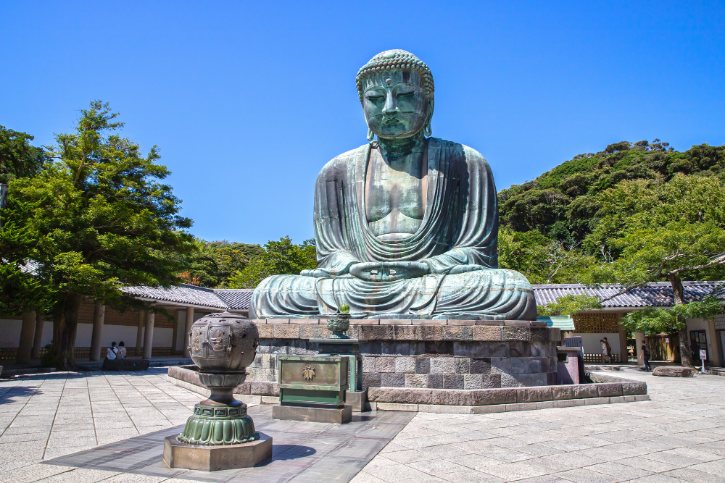
You’ll feel a profound sense of peace standing before this 800-year-old bronze Buddha. The statue sits serenely under open sky, weathering centuries of storms.
This is Kamakura’s most iconic sight, where ancient artistry meets enduring spirituality.
b. Highlights
- Great Buddha statue sits 11.3 meters tall in the open air
- Step inside the hollow bronze statue for a unique perspective
- Cherry blossoms frame the Buddha beautifully each spring
- Stone lanterns and haiku monuments dot the peaceful courtyard
- Morning visits offer the quietest moments for reflection
- Ancient bronze bell near the entrance rings at New Year
- The Buddha’s gentle face retains traces of original gold leaf
2. Tsurugaoka Hachimangu Shrine – Kamakura’s Heart
a. Why Visit
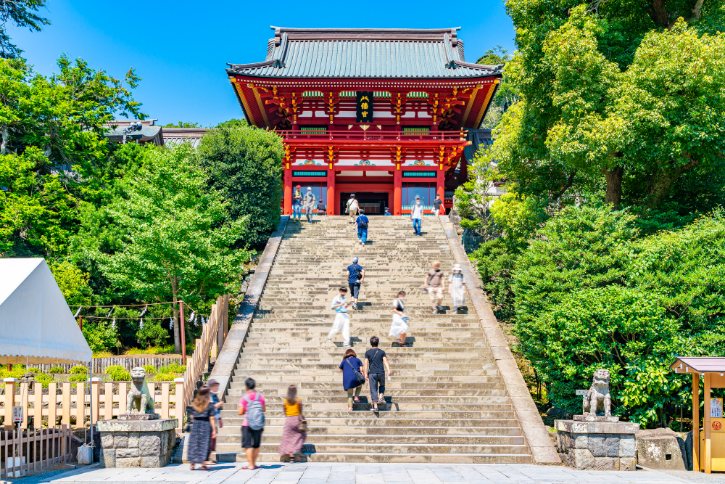
This grand vermilion shrine served as Kamakura’s spiritual and political center.
You’ll climb 61 stone steps to reach the main hall with sweeping city views. The shrine buzzes with local life, from wedding ceremonies to seasonal festivals.
b. Highlights
- Main shrine atop the dramatic stone staircase offers panoramic views
- Twin Genpei Ponds symbolize historic clan rivalries with islands and bridges
- Maiden dance stage hosts traditional performances during festivals
- Wakamiya Oji approach stretches from the coast, lined with cherry trees
- Horseback archery demonstrations showcase samurai traditions each September
- Peony garden blooms vibrantly in winter and spring
- Small sub-shrines like Maruyama Inari offer intimate prayer spots
3. Komachi-dori Street – Shopping and Snacks
a. Why Visit
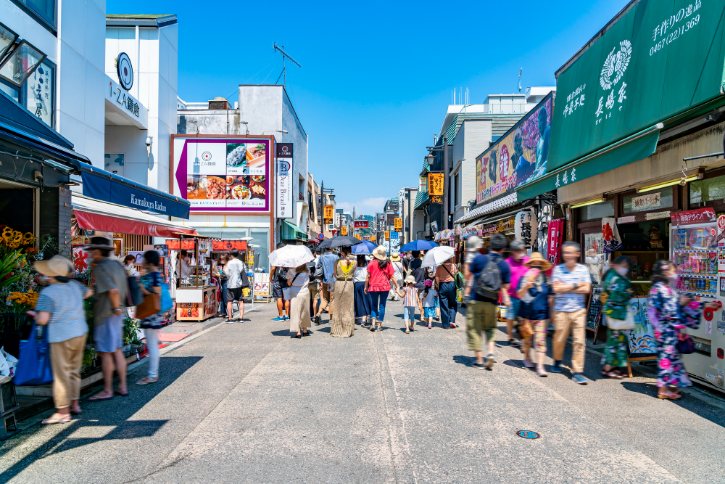
This bustling pedestrian street connects Kamakura Station to the shrine. You’ll find 250 shops packed with local treats and trendy boutiques.
The energy here captures modern Kamakura’s blend of tradition and youth culture.
b. Highlights
- Red torii gate marks the street entrance by the station
- Giraffa Curry Pan: Crispy fried bread filled with rich Japanese curry and melted cheese.
- Maruten: Freshly fried fish cakes on sticks with flavors like octopus and cheese.
- Sakura no Yumemiya: Colorful dango rice dumplings topped with sweet sauces, perfect for photos.
- Hannari Inari: Rolled inari sushi wrapped in fried tofu pouches with creative fillings.
- Toshimaya Setokoji: Home of Kamakura’s iconic dove-shaped cookies, the famous Hato Sablé.
- Wasai Yakura Komachidori: Popular for shirasu-don, a whitebait rice bowl made with fresh Sagami Bay seafood.
- Tomoya Kamakura Komachi: Cute Great Buddha-shaped cakes filled with sweet bean paste or custard.
- Kamakura Chacha: Premium matcha ice cream shop where you choose the richness level from 1 to 5.
- Crêpe Shop Coquelicot: Long-loved crepe stand offering both sweet and savory fillings.
4. Hokokuji Temple – The Bamboo Temple
a. Why Visit
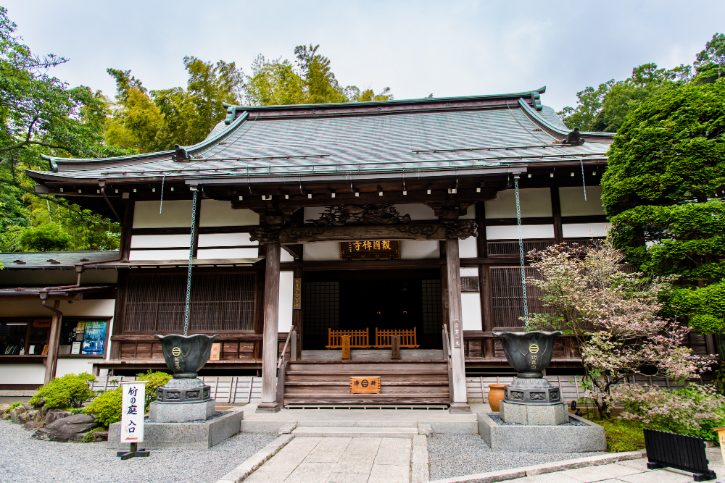
You’ll enter a magical world walking through 2,000 towering bamboo stalks.
This Zen temple offers matcha tea in the grove, creating pure tranquility.
The rustling bamboo and filtered sunlight transport you far from city life.
b. Highlights
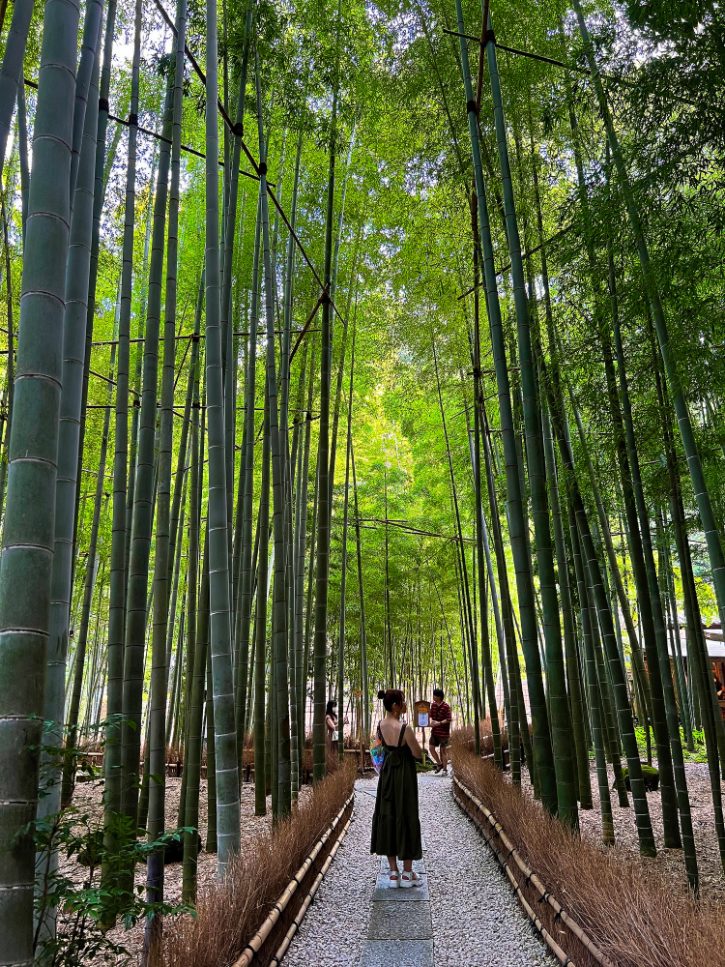
- Bamboo grove paths lead to a traditional tea house
- Sip matcha while listening to wind through the bamboo
- Thatched bell tower survived the 1923 earthquake
- Large cave tomb holds Ashikaga clan history
- Winter plum blossoms add color to the entrance garden
- June iris garden opens behind the bamboo (extra fee)
5. Hasedera Temple – Ocean Views and Gardens
a. Why Visit

This hillside temple combines a massive golden Kannon statue with spectacular coastal panoramas.
You’ll wander through seasonal gardens climbing to viewpoints over the bay. June’s hydrangea explosion makes this Kamakura’s most photographed spot.
b. Highlights
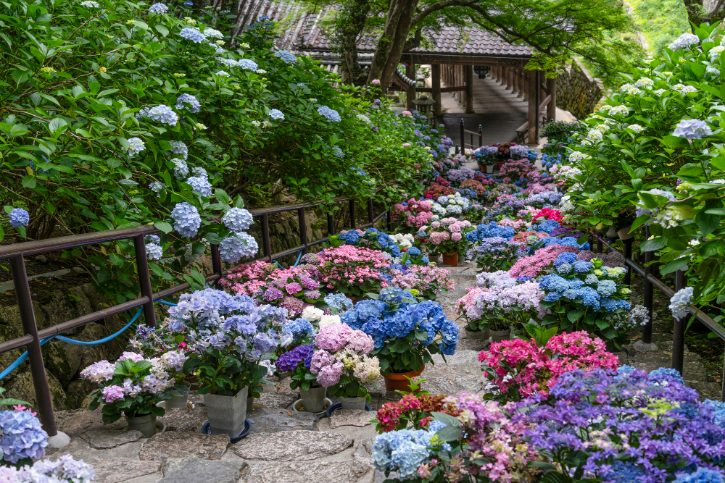
- Nine-meter Kannon statue covered in gold leaf dominates the main hall
- Hydrangea path blooms with 2,500 plants each June
- Observation terrace offers stunning Yuigahama Beach views
- Explore the mysterious Benten cave with carved deities
- Touch the Daikoku statue for prosperity and luck
- Koi ponds and seasonal flowers create year-round beauty
- Museum displays the temple’s 1,300-year Buddhist treasures
6. Meigetsu-in Temple – The Hydrangea Temple
a. Why Visit
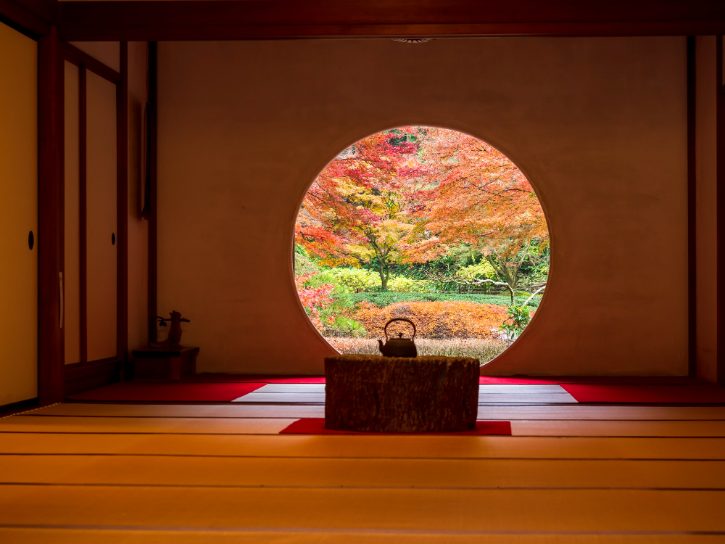
June transforms this Zen temple into a sea of blue hydrangeas.
The famous round window frames seasonal garden views perfectly. You’ll discover moon imagery throughout, from rabbit motifs to the temple’s name.
b. Highlights
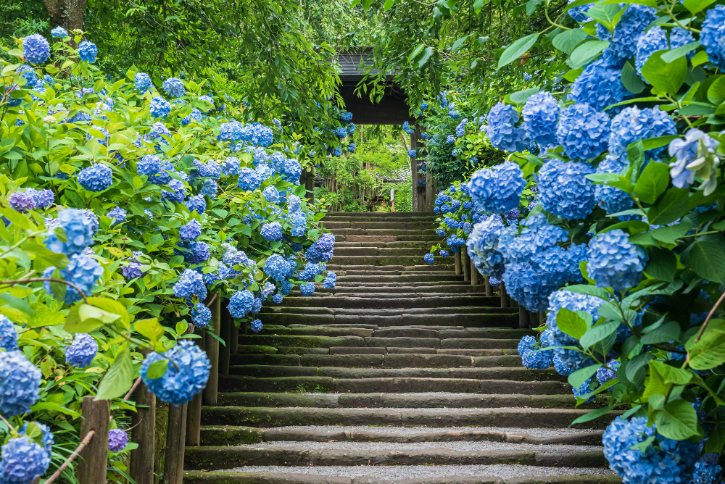
- 2,500 hydrangea bushes create June’s famous blue tunnel
- Round Window of Enlightenment frames iris and maple views
- Largest cave tomb in Kamakura holds Hojo clan history
- Inner garden opens only during iris and autumn seasons
- Spring brings peach, forsythia, and quince blossoms
- Rabbit statues and motifs reference moon folklore
7. Zeniarai Benten Shrine – The Money-Washing Shrine
a. Why Visit
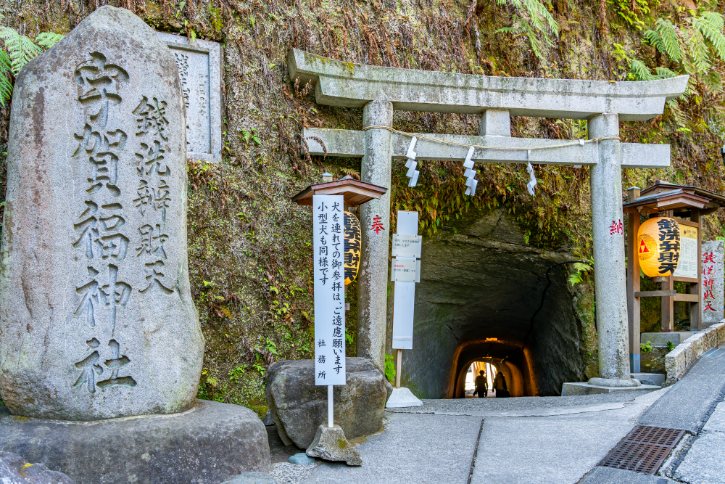
You’ll enter through a mysterious tunnel to reach this hidden valley shrine.
Washing money in the sacred spring supposedly multiplies your fortune. The ritual dates back 800 years to Kamakura’s founding.
b. Highlights
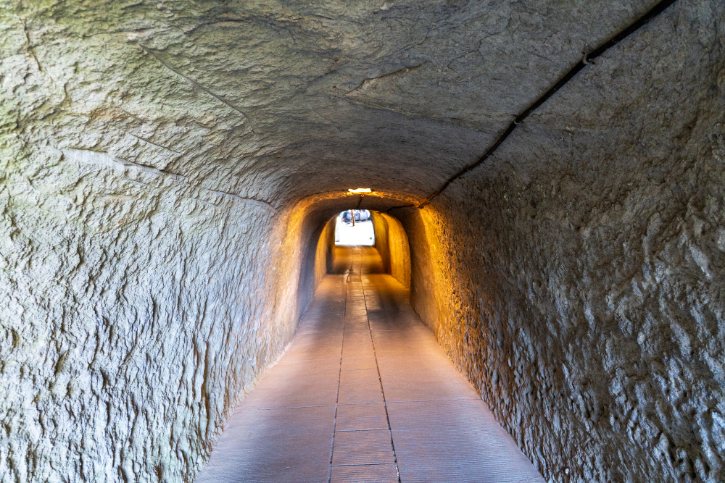
- Sacred cave spring where visitors wash coins and bills
- Rock tunnel entrance creates a secret, ancient atmosphere
- Bamboo baskets provided for the money-washing ritual
- Snake deity statue represents the shrine’s water god
- Secluded valley setting feels removed from time
- Candles and incense enhance the mystical cave experience
- Spring wisteria and azaleas bloom around the cliffs
8. Enoshima Sea Candle – Views Over the Shonan Coast
a. Why Visit
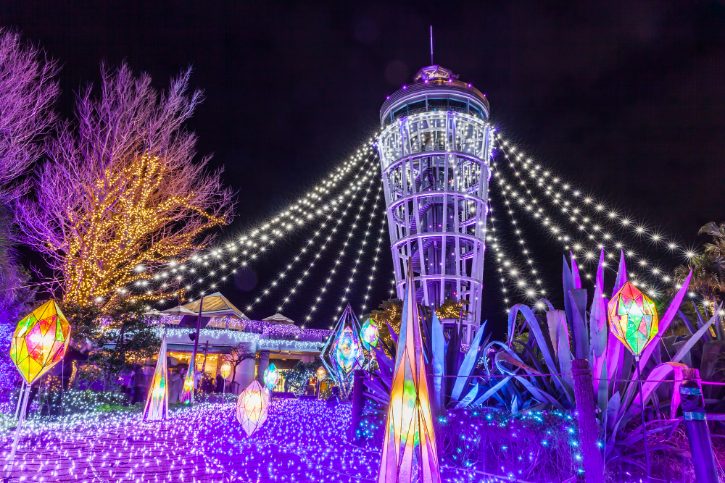
This modern lighthouse tower offers 360-degree views from 120 meters above sea level.
You’ll see Mount Fuji, the Pacific, and Tokyo’s skyline on clear days.
Winter illuminations transform the tower and gardens into a romantic wonderland.
b. Highlights
- Observation decks showcase Mount Fuji and ocean panoramas
- Samuel Cocking Garden surrounds the tower with exotic plants
- Winter illumination events light up 10,000 LEDs nightly
- Functioning lighthouse beacon guides ships in Sagami Bay
- Enoshima Escar escalators whisk you up the steep climb
- Sunset views with Fuji silhouetted are photographer favorites
- Garden café and gift shop occupy the tower base
9. Enoshima Shrine – Three Sacred Sanctuaries
a. Why Visit
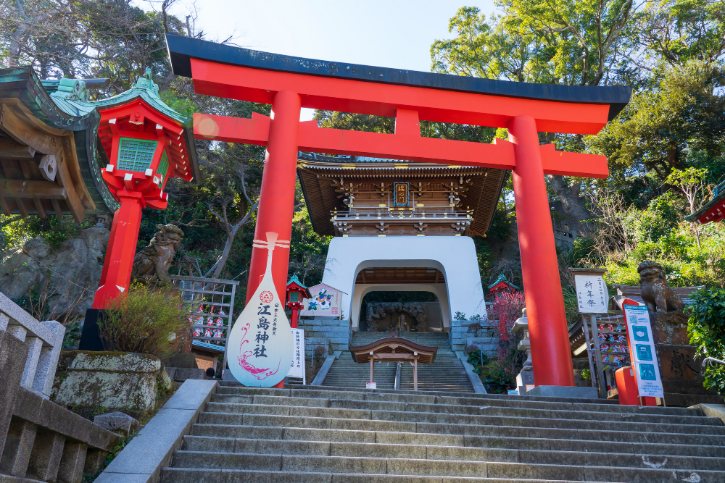
Three sister shrines at different elevations honor the sea goddesses.
You’ll climb through vermilion gates discovering each sanctuary’s unique character.
This is one of Japan’s Three Great Benzaiten Shrines.
b. Highlights
- Bronze torii gate welcomes visitors at the causeway
- Hetsunomiya main hall features elaborate phoenix carvings
- Rare naked Benzaiten statue displayed on special occasions
- Dragon Love Bell where couples seal their wishes
- Nakatsunomiya offers sweeping ocean views midway up
- Okutsunomiya at the summit connects to cave origins
- Three-scale Hojo clan crest appears throughout the complex
10. Enoshima Benzaiten Nakamise-dori Street – Island Flavors
a. Why Visit
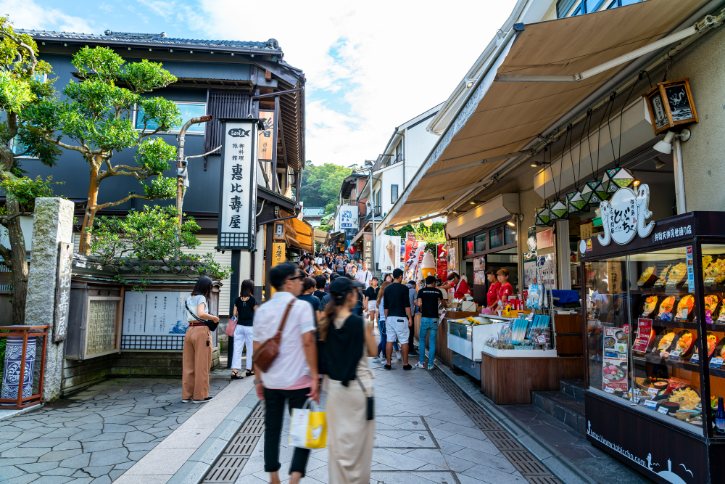
This stone-paved approach climbs from the bronze gate to the shrine.
Traditional shops serve grilled turban shells and octopus crackers fresh. You’ll taste Enoshima’s seafood specialties while enjoying retro charm.
b. Highlights
- Sazae turban shells grilled over charcoal fill the air
- Tako-senbei octopus crackers pressed flat before your eyes
- Century-old inns mix with modern gelato stands
- Shirasu-don whitebait bowls showcase the local catch
- Zuishinmon dragon gate marks the street’s colorful end
- Festival days bring taiko drums and decorated streets
- Side paths lead to island spa and cultural sites
11. Iwaya Bridge – Dramatic Coastal Walkway
a. Why Visit

Red-railed bridges connect clifftop paths to the ancient Iwaya caves.
Waves crash dramatically below while Mount Fuji rises across the water. This is Enoshima’s wild edge, where ocean meets rock.
b. Highlights
- Red bridge spans tidal pools at the cave entrance
- Iwaya caves stretch 152 meters into sacred darkness
- Candlelit Buddhist statues line the mysterious passages
- Chigogafuchi rocky plateau offers Fuji sunset views
- Ocean spray and crashing waves create natural drama
- Boardwalks ensure safe passage along steep cliffs
12. Enoshima Aquarium – Windows to Sagami Bay
a. Why Visit
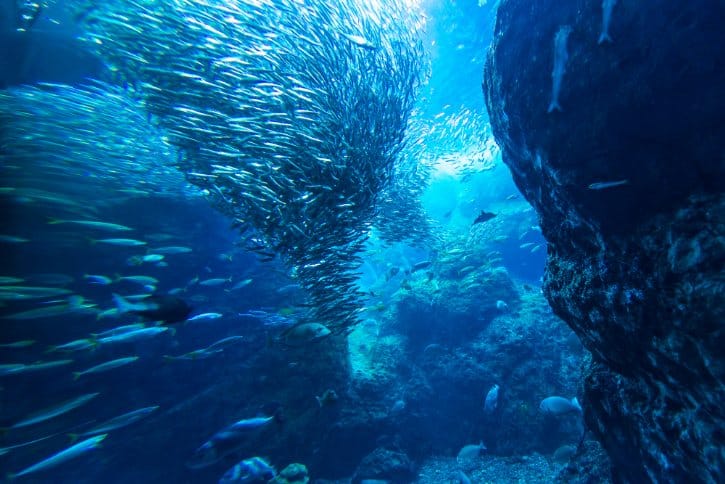
Japan’s first modern aquarium showcases local marine life spectacularly.
The massive tank recreates Sagami Bay with 8,000 sardines swirling. Dolphin shows feature Mount Fuji and ocean backdrops.
b. Highlights
- Big Sagami Bay Tank holds 20,000 creatures in synchronized motion
- Jellyfish Fantasy Hall displays 60 years of breeding expertise
- Dolphin performances leap against real ocean horizons
- Sea turtle beach recreates Shonan’s natural coastline
- Touch pools let kids handle starfish and sea cucumbers
- Deep-sea exhibits feature research submarines and specimens
- Panoramic café overlooks Enoshima Island across the bay
Best Places to Eat in Kamakura and Enoshima
1. bills Shichirigahama – Famous for Seaside Breakfasts and Views
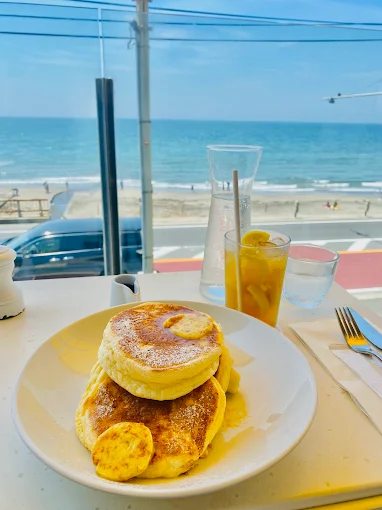
The ricotta pancakes with honeycomb butter launched Japan’s pancake boom. Floor-to-ceiling windows overlook the ocean, where you can watch surfers in the morning and sunsets later in the day.
2. The Sunrise Shack – Hawaiian Smoothie Paradise
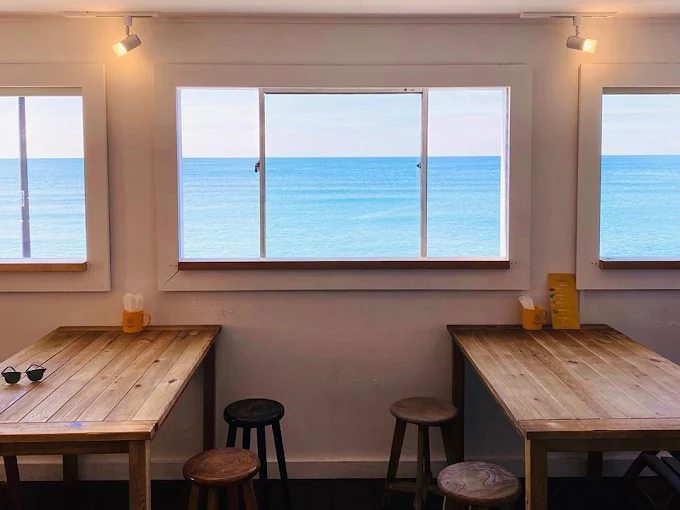
Organic bullet coffee and acai bowls bring North Shore vibes to Kamakura. The tiny yellow beach hut opens at 7am for sunrise seekers.
3. Cafe Yoridokoro – Traditional Breakfast by the Tracks
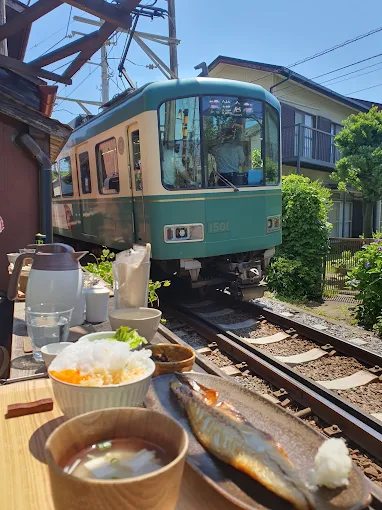
Charcoal-grilled himono fish arrives as the Enoden train rumbles past. The raw egg over rice with perfectly cooked fish defines comfort.
4. Iwata Coffee Shop – Legendary Hotcakes Since 1945
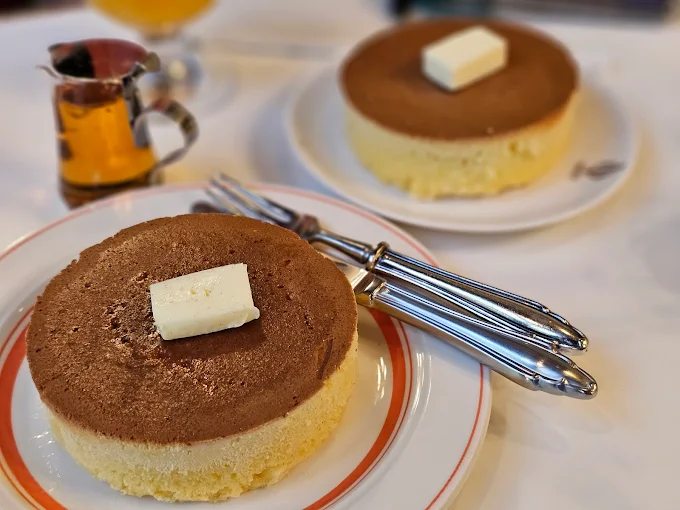
These legendary pancakes arrive golden and fluffy, with crispy edges and cloud-like centers. The 1948 recipe remains secret, but the Hokkaido butter melting on top says it all.
5. Aratama Katsu Tei – Premium Tonkatsu Specialist
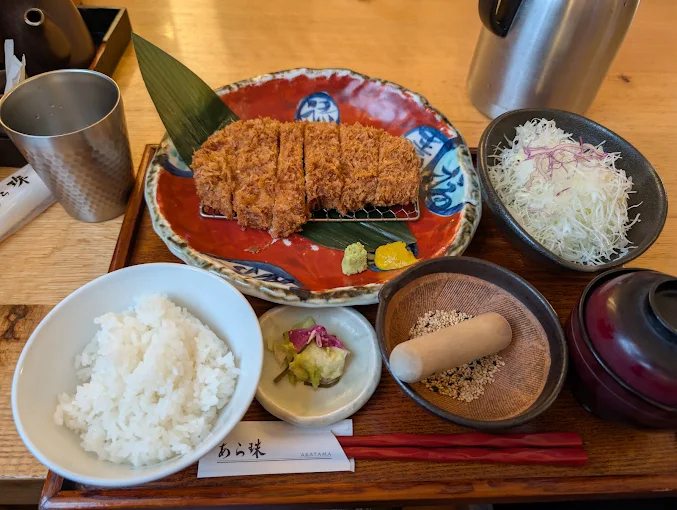
Nasu Highland pork cutlets fry to perfection in special oil blends. The homemade red tomato sauce contains twelve fruits and vegetables.
6. Windera Café – Surf and Turf with Ocean Views
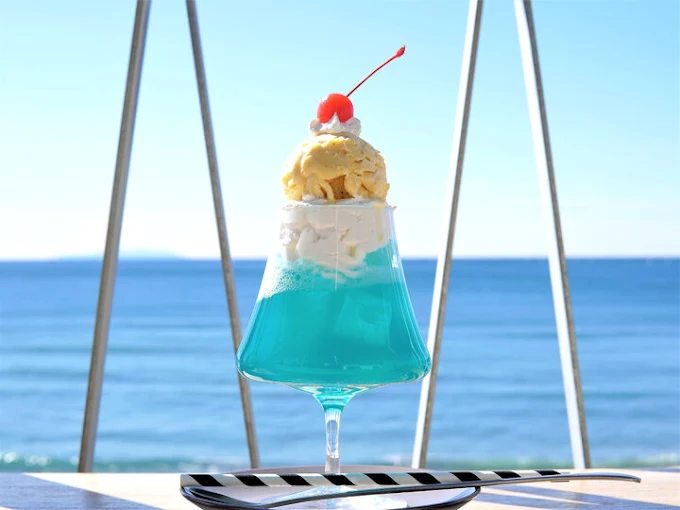
Mussels steam in white wine while dry-aged beef burgers cascade with cheese. Sunset cocktails match the Shonan sky’s changing colors.
The signature Fujiyama Cream Soda, a vivid blue float topped with vanilla ice cream and a cherry, captures the sea and sky in a single glass.
7. Enoshima Uomi-tei – Cliffside Dining Since 1860
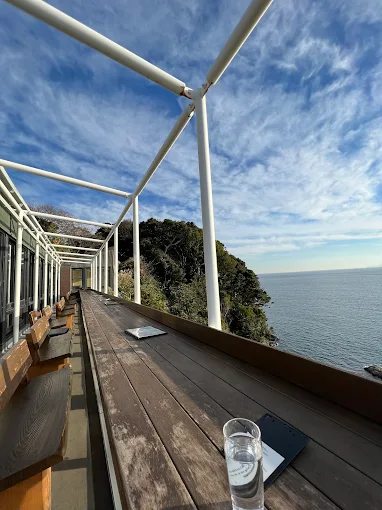
The secret-recipe Enoshima bowl features turban shell simmered with egg. Every seat offers ocean views reaching to Mount Fuji.
8. Enoshima Koya – Award-Winning Seafood Bowls
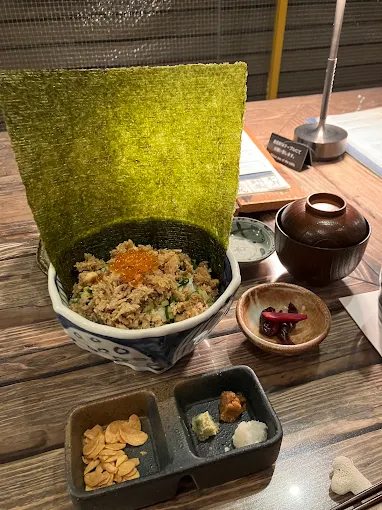
The gold-prize Makanai bowl mixes fresh sashimi with sesame-miso. Breakfast service starts at 8am.
Getting Around Kamakura & Enoshima
a. Kamakura Local Transportation
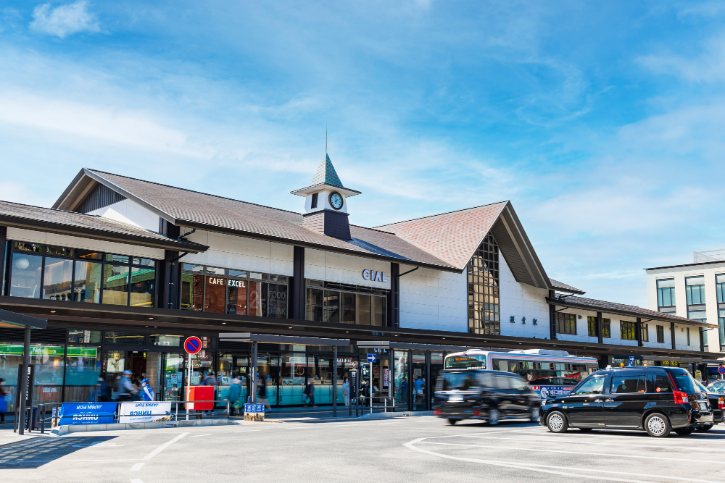
Kamakura Station serves as your main base with JR Yokosuka Line and the charming Enoden Line. The station’s East Exit leads to Komachi-dori and buses for outlying temples. West Exit connects directly to the Enoden platform.
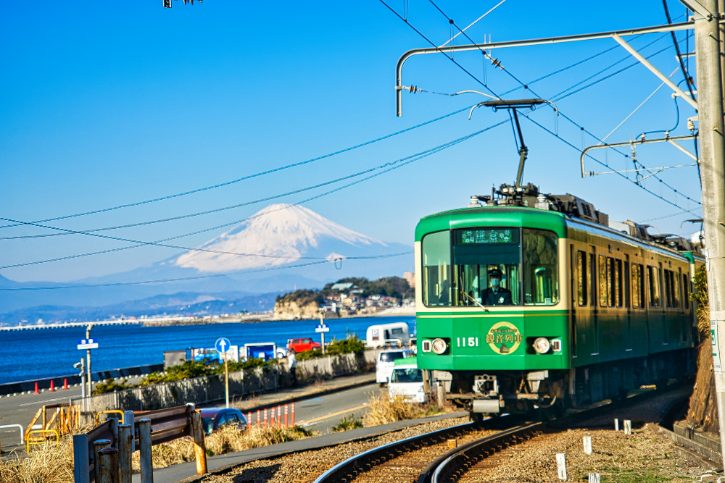
The Enoden Line becomes an attraction itself, especially between Inamuragasaki and Shichirigahama. These green trains run every 14 minutes to Hase Station for the Great Buddha. The coastal stretch offers spectacular ocean and Fuji views.
City buses from East Exit reach Hokokuji Temple and northern temples efficiently. Walking remains pleasant between central sites like Tsurugaoka Hachimangu and the station. Zeniarai Benten Shrine requires a 25-minute walk or short taxi ride.
Most visitors start at Hase Station for the Buddha and temple circuit. The walkable scale lets you discover quiet neighborhoods between major sites. Bicycle rentals near the station offer another exploration option.
b. Enoshima Local Transportation

Three mainland stations serve Enoshima Island from different angles. Katase-Enoshima Station (Odakyu Line) sits closest to the bridge entrance. Enoshima Station (Enoden) and Shonan-Enoshima Station (Monorail) require 10-minute walks.

The Enoshima Benten Bridge spans 389 meters from mainland to island. This pedestrian causeway offers views of yachts and windsurfers below. Most visitors walk this scenic approach to start their island adventure.
The Enoshima Escar outdoor escalator system saves energy climbing the steep island. Three connected sections lift you 46 meters to the Sea Candle level. The system only goes up, so you’ll walk down different paths.
Stone steps and walking paths connect all shrine levels and attractions naturally. The route flows upward through shrines to the Sea Candle, then descends to Iwaya Caves. The seasonal Bentenmaru ferry offers a scenic return from the caves.
How to Get to Kamakura
- From Shinjuku Station to Kamakura: Take the JR Shonan–Shinjuku Line directly to Kamakura Station (about 60 minutes, ¥950).
- From Shibuya Station to Kamakura: Take the JR Shonan–Shinjuku Line directly to Kamakura Station (around 55 minutes, ¥950).
- From Tokyo Station to Kamakura: Take the JR Yokosuka Line directly to Kamakura Station (around 55 minutes, ¥950).
All routes are direct with no transfers required. Once you arrive at Kamakura Station, the main shopping street Komachi-dori is right outside. You can also take the charming Enoden Line to reach the Hase area, where the Great Buddha and beaches are located.
